What could be simpler buttons?
Safe Trip - travel support service
Case of developing a mobile application that reduces the appeal to the insurance to a single action point
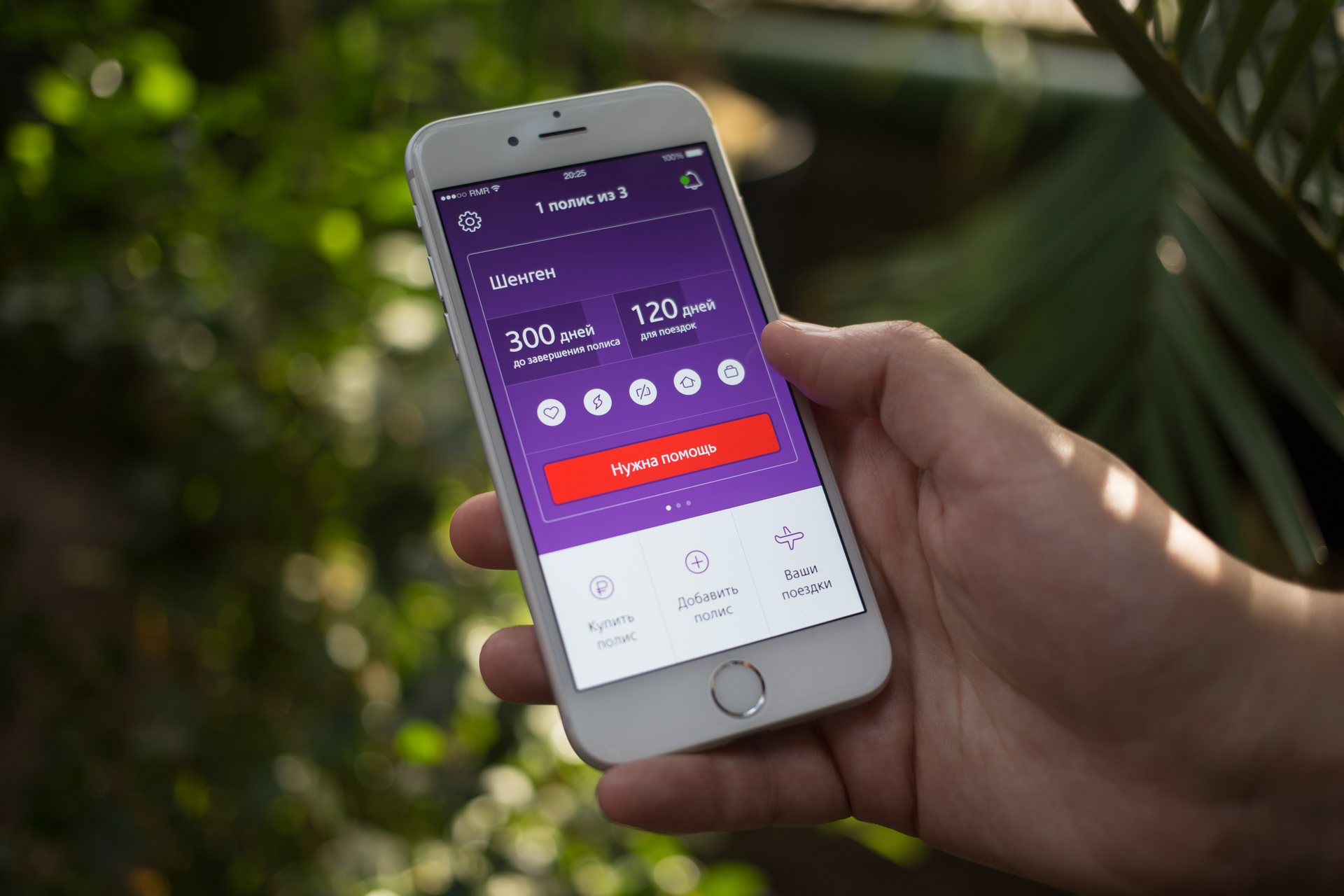
Have you had any insured events while on holiday abroad? If not, then good, and God bless you! However, any unpleasant incident can happen to anyone, when you have to remember about your insurance policy, which is lying somewhere at the bottom of a suitcase. OK, even if it does not roll, but is stored in the smartphone (and the smartphone is always at hand), in an emergency you will need to find the phone number of the insurance company, call the operator, report the incident, give your exact location and policy number. It seems not very difficult, but in a stressful state - the simpler, the better.
About customer and purpose
Renaissance insurance is one of the largest insurance companies in Russia. What is important for this project: in direct insurance - sales of policies through the Internet and call center - it is the absolute leader among universal insurance companies. The mobile application was supposed to be a continuation of the concept of integrating simple and useful services Renaissance insurance into everyday life. Services, greatly simplifying the lives of customers.
At the start, the customer had clear goals: to make a really cool and useful service (the ability to declare an insurance case in the simplest and most convenient way), increase customer loyalty and provide business benefits from the mobile product (increase re-sales of insurance policies).
')

Customer Value: Quick Help and Savings
The scheme of the main function - the “panic button” - is as follows: in an emergency, the application generates an SMS with all the information necessary for providing the insured person with information (the victim’s full name, his GPS coordinates and contact details, the type of insured event, the policy number) and sends to the call -Centre. The operator calls back the tourist, specifies the details and helps to solve the problem.
The client saves the actual call (incoming roaming is much cheaper than outgoing), does not panic at the question “where exactly are you?” And does not worry about the availability of information at hand (passport and policy numbers, phone of the insurance company).
The most important moment, around which everything was built, is the possibility in the case of force majeure to immediately see and press the alarm button, without being distracted by anything.Pavel Gorshkov, art director of Redmadrobot
The second point is to make for the user the most transparent algorithm for sending a message, to carry it out so that he does not get confused and not lost: so that at every step of the interaction he understands what is happening now and when done - what now to do?

Main usage scenario
Prerequisite: The client downloaded and installed the Safe Trip mobile app and entered his policy data into it. Otherwise, he will have to resolve the issue in the old-fashioned way - when something has already happened, no one will bother downloading the application.
• An insured event has occurred - cancellation of a trip, loss of luggage, a case with a flat, injury or illness, an accident or another situation stipulated by the client's policy.
• The client enters the Safe Trip app, sees the “Need Help” button on the start screen and presses it. Next, selects the type of the insured event and presses the "Call me" button.
• The application generates and sends SMS, which informs the insurer about the client's situation, his GPS coordinates, personal data and policy number.
• Within 15 minutes the operator calls the customer back and further communication, based on accurate information, takes place by telephone.
The concept of “Screen - like one big red button”, of course, appeared in the discussion of the project. But it turned out to be impractical. On the one hand, the person is already so anxious - he is unlikely to like to look at the huge button on the half-screen while waiting for a call from the help desk. On the other hand, there are other important services for non-stress use in the application.
• Administration of policies and travel. In order for the application to process the alarm and correctly transmit the information to the insurer's call center, the user must enter all the necessary data.
• Consideration of the validity period of travel, travel dates and countries of stay.
• Customize the application.
• Information and reference messages.
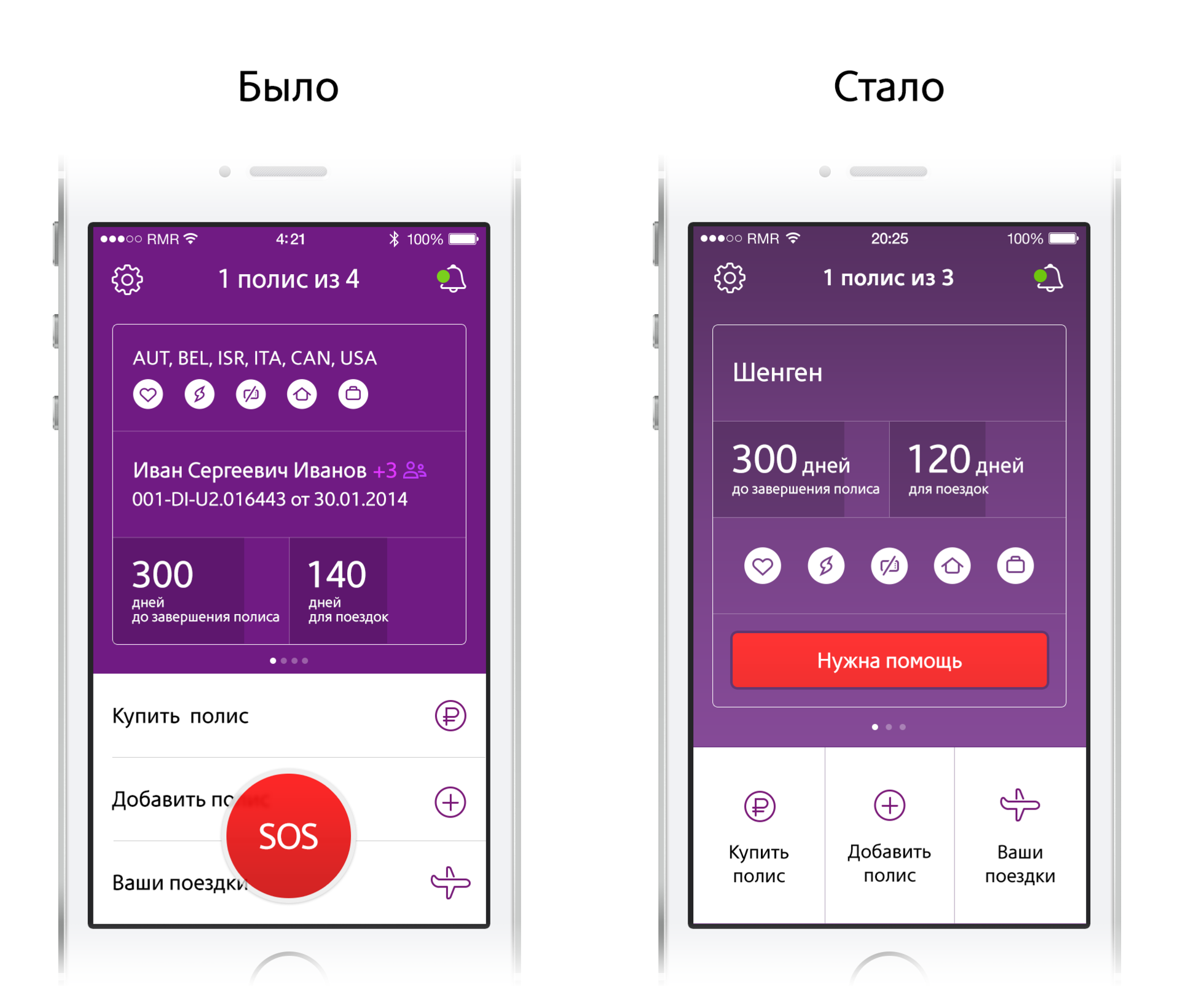
Design: simplicity is difficult
Approval of the application design took about three months - during this time five layouts were drawn, rendered in static HTML, with different logic of transitions and screen layouts. In total, there were about a hundred screens, despite the fact that the application for business tasks seems very simple.
Design in interfaces is by no means a design. This is the design of scenarios for solving problems of users on the one hand, and business on the other. And the mobile context obliges to treat this especially carefully: the screen is an order of magnitude smaller than the computer monitor; the finger is incomparably larger than the mouse cursor; minimum time, maximum level of distraction. There are so many nuances that a truly engineering approach is required.Maxim Ten, creative director Redmadrobot
Why do developers need an A0 plotter
It would seem that mobile application developers may need to print? Well, a dozen or so screens of the iPhone. For this, an ordinary A4 color printer is enough. But why the plotter?
The fact is that when the application logic becomes more complicated and the number of screens and transitions between them is adjusted to a hundred, it’s impossible to keep all this in my head and it’s impossible to look at it on one monitor either - it’s too small. This is where a large plotter helps you, where you can display a map of the screens - the entire application. Then you can hang it on the wall and discuss it with the whole team.
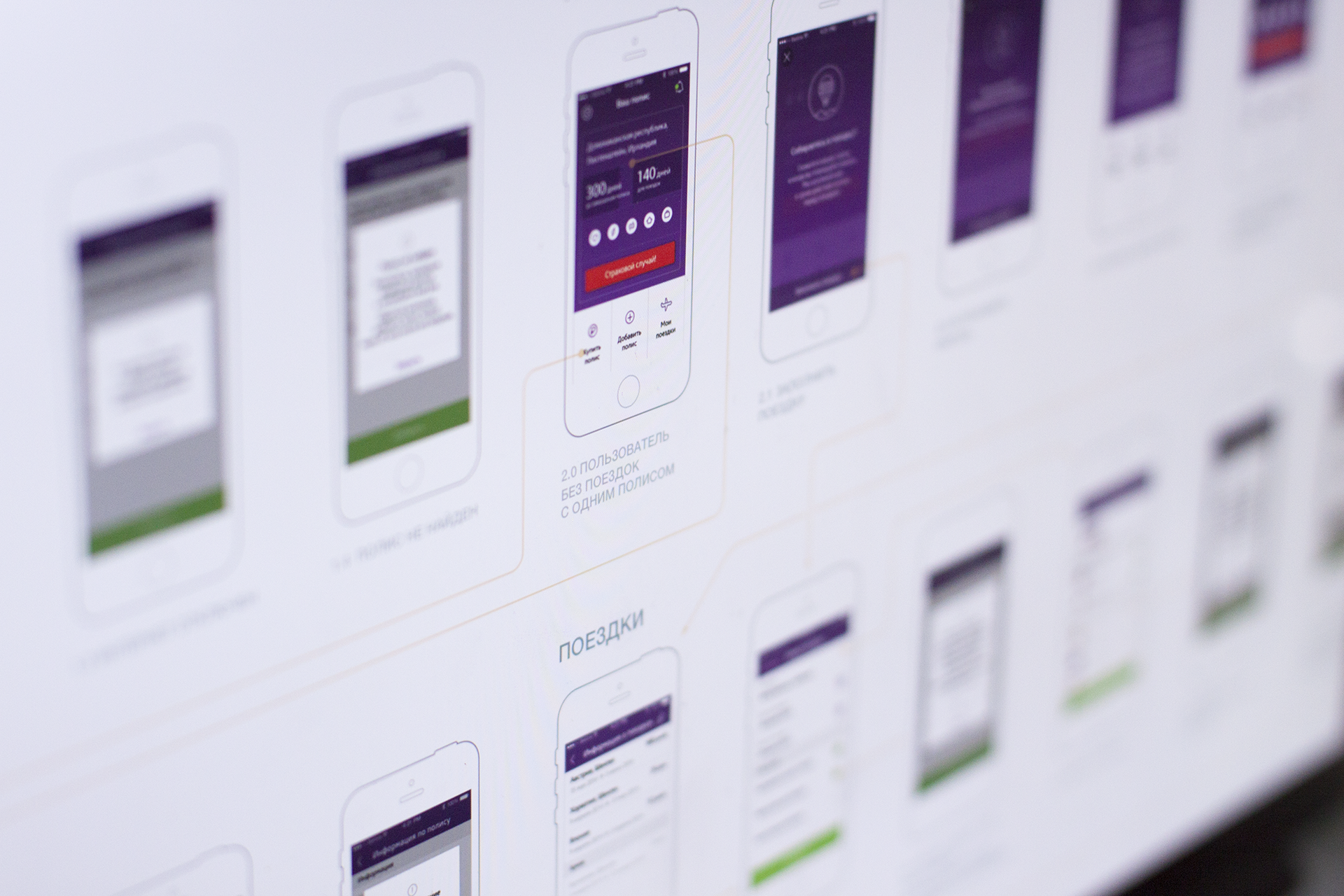
Some components of the application development look more conveniently and visually on paper - include the organization of the entire workspace, including visual materials, in project management tasks.
Policies, tourists and smartphones: many to many
Complication of logic inside the application happens, for example, because the client does not always travel alone and with one device.
• A tourist may have several active policies - for different countries, for example.
• Several people can be included in one policy - the whole family or even a whole pioneer squad.
• The application can be installed on multiple devices. Again, if the client travels as a family.

In other words, the entities “Tourist”, “Policy” and “Device” are in many-to-many relationships, and this must be taken into account when developing.
Architecture: delineate responsibility
When a developer makes an application for himself, the architecture is important only in technical terms - so that the product is reliable, scalable, so that it is possible to develop individual blocks, understanding how they will fit.
But when the project is for a corporate client, the architecture also reflects political moments, helping to delineate the areas of responsibility between the contractor and the customer. For example, no one will allow an external developer to back-office applications in an insurance company, but they will require integration.
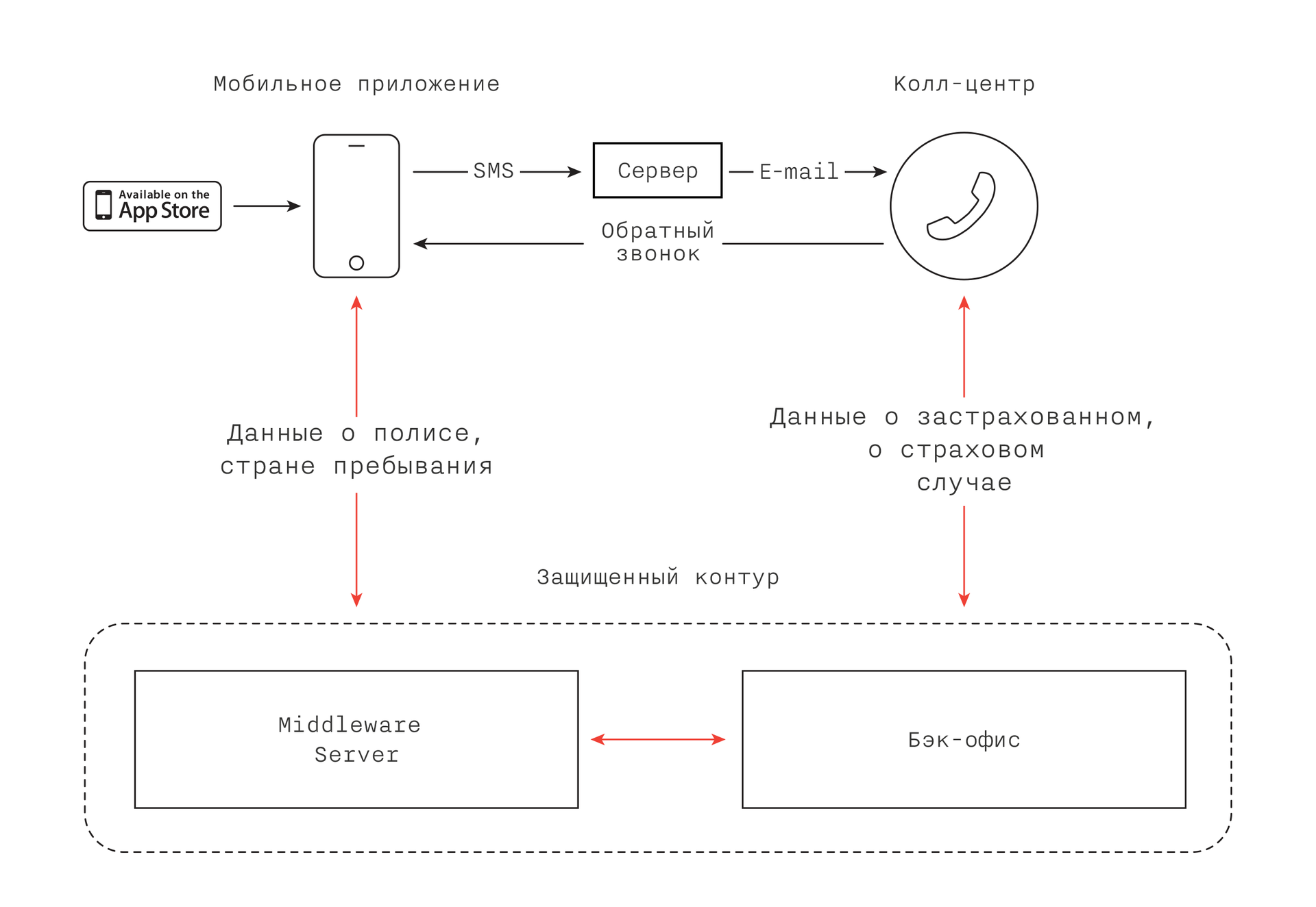
The architecture was developed by both parties together, and it was fairly easy to agree with the security service, which is actually very rare. There were no problems. Apparently, the developers have already filled their cones earlier and this played a positive role. Then we wrote web services over our accounting systems. And the guys from Redmadrobot made the application itself and the middleware server. Actually, it communicates through it - the application accesses middleware, and it already interacts with our web services, and caching takes place on it.Sergey Trofimov, Technical Director of the Renaissance Insurance Project
Personal Information
Strictly speaking, Safe Trip application does not process personal data. When a client enters his information into the application, it is saved in it, of course - but this is only his information stored locally on his personal device. And you need to save only the number of the policy and the names of the insured - and this is not even personal data at all, so the usual security measures are enough. The processing of an array of personal data for all clients takes place on the server of the insurance company, which is located in a secure perimeter and meets all the requirements of the competent authorities.
It was about this that we had a major argument with the security men. IB insisted on an obligatory password for access to the application, but we defended the position that the client should be responsible for his security - if he wants, he can set a password, but we did not make a mandatory password entry.
Nikolay Efankin, Safe Trip Project Manager, Renaissance Insurance

Mobile application VS mobile version of the site
The main difference between an application and a mobile version of a site is that in the first case the service (content, services) “lives” on the user's device and can interact with it proactively, and in the second it can only wait for a visit that does not know when it will happen.
Take the example of insurance. Some customers who travel frequently purchase a multiple policy with a long term and a limited number of insured days (for example, 180 and 90, respectively). It turns out that you need to count the number of days spent on trips in order to extend the policy in time (just remember the date in the calendar for the next purchase will not work) and not be in trouble with invalid insurance. This tedious job of accounting for the number of used insurance days is better to entrust to the application.

In the first version of Safe Trip, the client must enter information about his trips himself, later it is planned to use GPS data to determine the client's location and automate the recording of insurance days.
In this form, the service on the mobile version of the site "live" can not.
By the way, about the renewal - the mobile application allows customers to find out the answers to frequently asked questions, issue / renew electronic policies, get step by step instructions in case of insurance claims. And this is - savings.
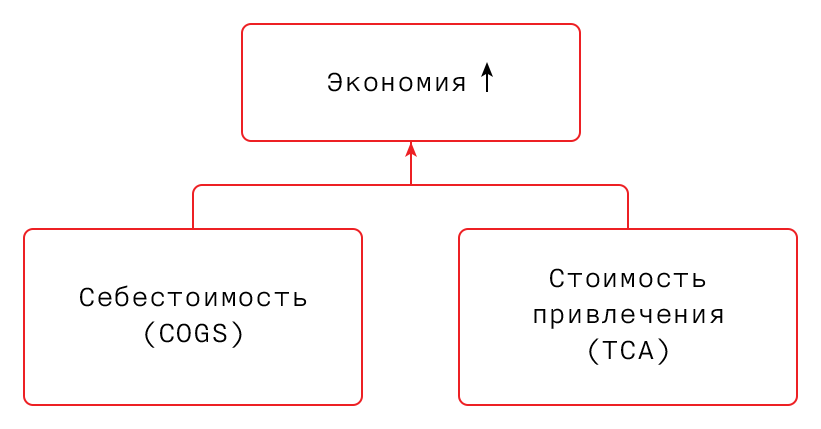
Future plans
Android version and self-control - it is important to resist complication, do not overload the application with unnecessary features and keep focus on the customer's business: Safe Trip helps the insurance company to sell policies and fulfill its SLA, that is, to assist insured clients as quickly and conveniently as possible.
Source: https://habr.com/ru/post/243075/
All Articles